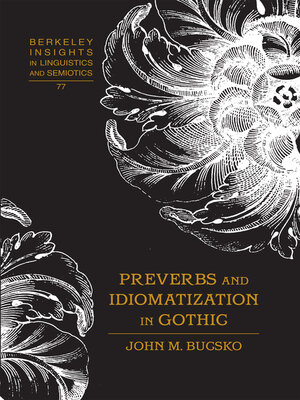Preverbs and Idiomatization in Gothic
ebook ∣ Berkeley Insights In Linguistics and Semiotics
By Irmengard Rauch

Sign up to save your library
With an OverDrive account, you can save your favorite libraries for at-a-glance information about availability. Find out more about OverDrive accounts.
Find this title in Libby, the library reading app by OverDrive.



Search for a digital library with this title
Title found at these libraries:
| Library Name | Distance |
|---|---|
| Loading... |
It is very common in Indo-European languages to derive new, compound verb forms from verb bases by adding prefixes to them. These prefixes, or preverbs, are originally derived from invariant forms and generally come from one of three categories: adverbs, adpositions (prepositions or postpositions), and inseparable particles. Preverbs and Idiomatization in Gothic focuses on these attributes of the Gothic language. The use of preverbs in Gothic is quite extensive in that over half of the verbs in Gothic show prefixation. Of the many stems that have preverbs attached, some alter the meaning of the original verb while others do not appear to change the meaning significantly. This book examines the use of preverbs in Gothic, with the specific focus on significant meaning changes or idiomatization, in which the resultant form does not mean simply the sum of its parts but takes on a new meaning that may or may not be clearly related to the meanings of the original forms.







